North Georgia and adjacent areas beware! You probably can find these prostitutes right around the outside of your house. What sort of prostitutes have invaded? Would it pique your curiosity to learn that each of them has eight legs?
The prostitutes I am talking about are these quite beautiful creatures, the ventral view of one of which is shown below.
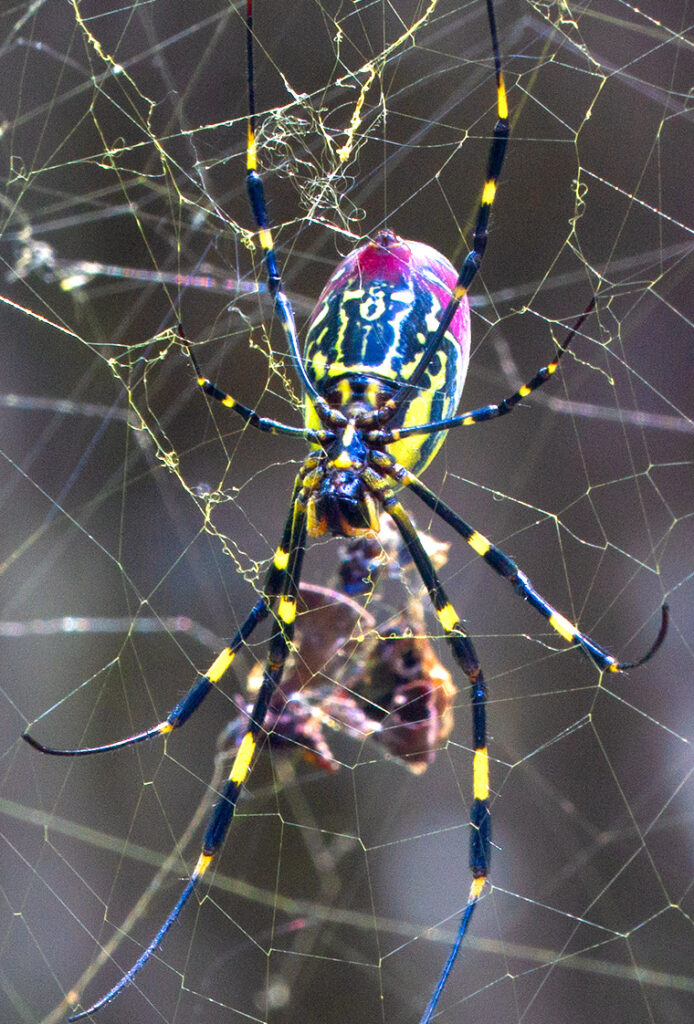
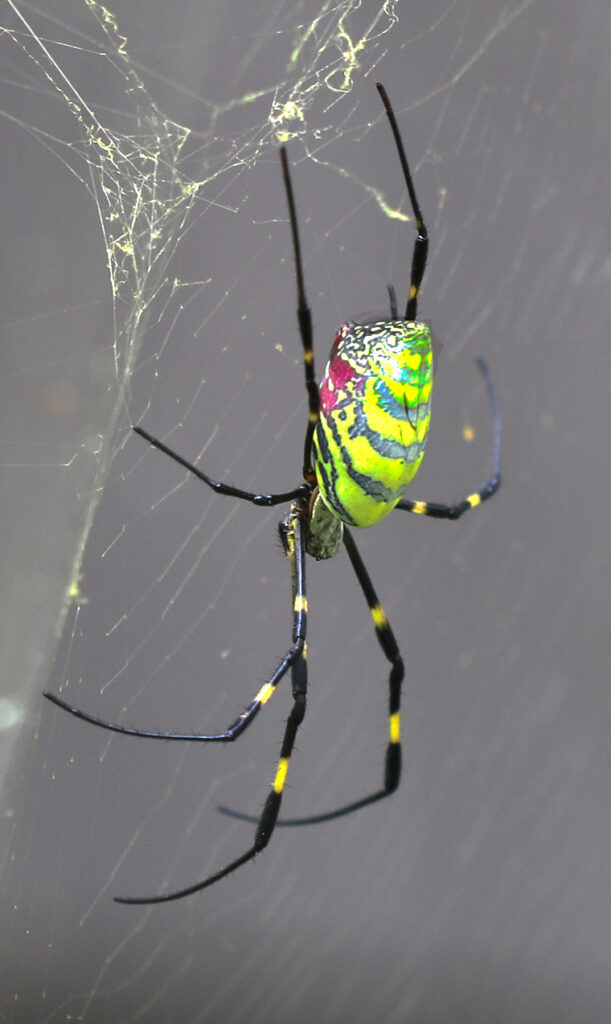
Here is a lateral view which shows that the brilliant colored pattern on the underside of the animal changes to green and yellow stripes on the back of the abdomen.
You can hardly miss one of these. They are quite large; this one measured about two and one half inches across. The black legs with yellow bands are characteristic, as is the abdomen with the red tip. This is Trichonnephila cravata (formery classified as Nephila clavata). It is native to East Asia, including China, Japan, Korea, Taiwan and Thailand. It was first detected in this country by Wesley Huffmaster, from Colbert, Georgia, just a few miles from our home. Since its first discovery in 2014, it has proved to be a very invasive species which has colonized a large area in North Georgia and adjacent areas.
This spider has several common names. The one used most around here is “joro spider”. Now joro is a Japanese word meaning “prostitute” or “whore”. So by our comon name we are calling these colorful creatures “Prostitute Spiders” or “Whore Spiders”. So we are being invaded by Asian prostitutes or whores.
Try as you may, you will not observe anything in this spider’s behavior which resembles protitution or whoredom. However, such a large and conspicuous spider attracted mythological ideas in Asian countries. This is similar to our inventing of Milk Snakes or Hoop Snakes.
In Korea, this brightly colored spider apparently resembled the colors worn by fortune tellers called Mudang. So its Korean name is Munang Gumi (gumi means spider) or “Fortune Teler Spider”.
In Japanese mythology, these spiders were thought to be able to transform into a “Jorogomo”. (gomo means spider in Japanese) or Whore Spider”. Once the spider reached a certain age, most commonly 400 years, it acquired the ability to transform into a beautiful woman who would attract men into her lair, capture them in a web and comsume them. You can read more about jorogomo at this site.
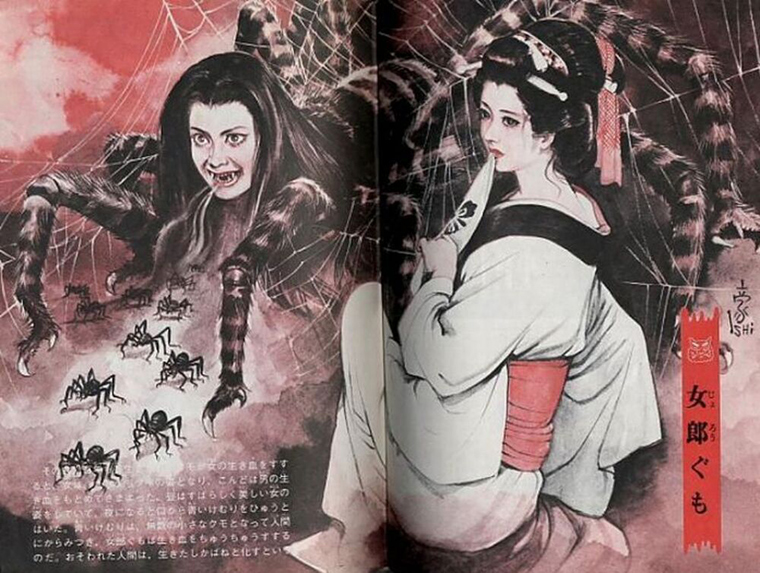
Here is a sample image of the appearance of a jorogomo in its human form and as a monster which is part human and part spider,
Since spiders in this country have never been observed to transform into beautiful women, I suggest a more appropriate common name for them would be “Rainbow Orbweaver” or “Oriental Orbweaver”.
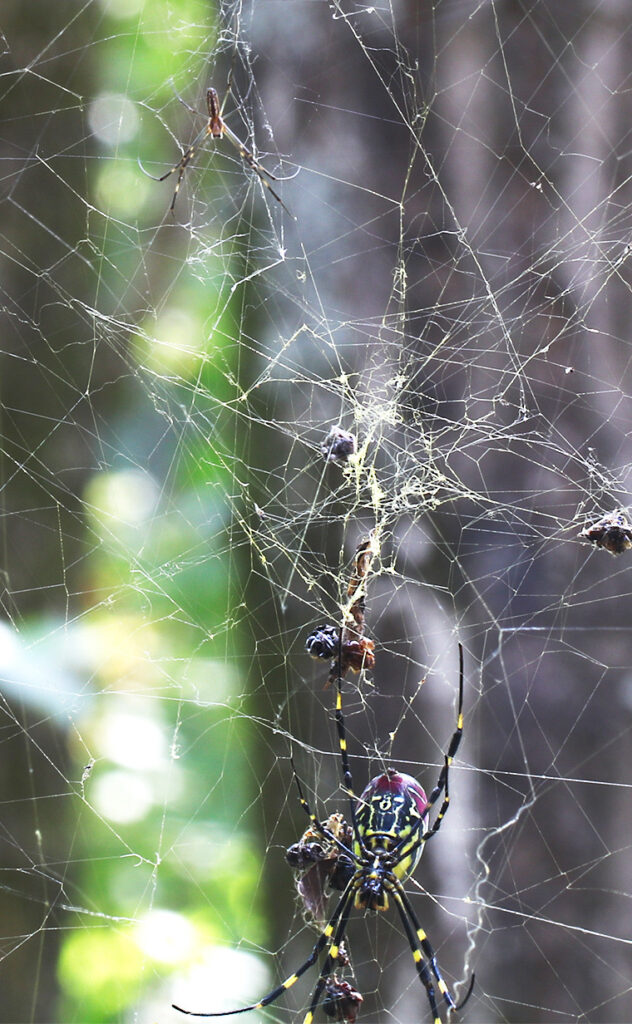
Here is a test for you. At the bottom of the photograph, a typical female can be seen. A male spider is also present. Can you find it?
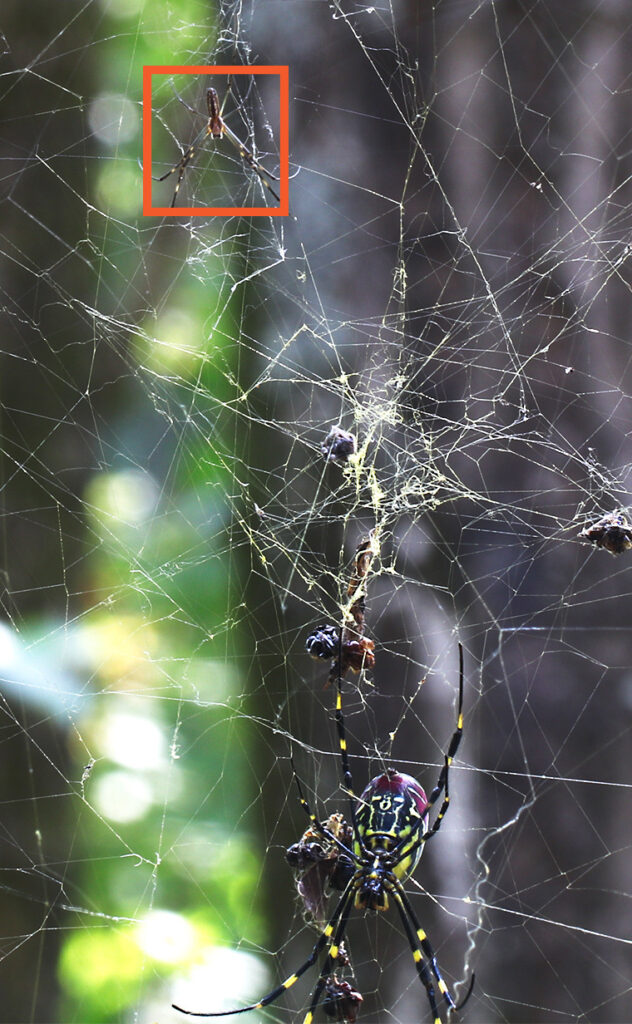
Here I have marked the male with a rectangle.
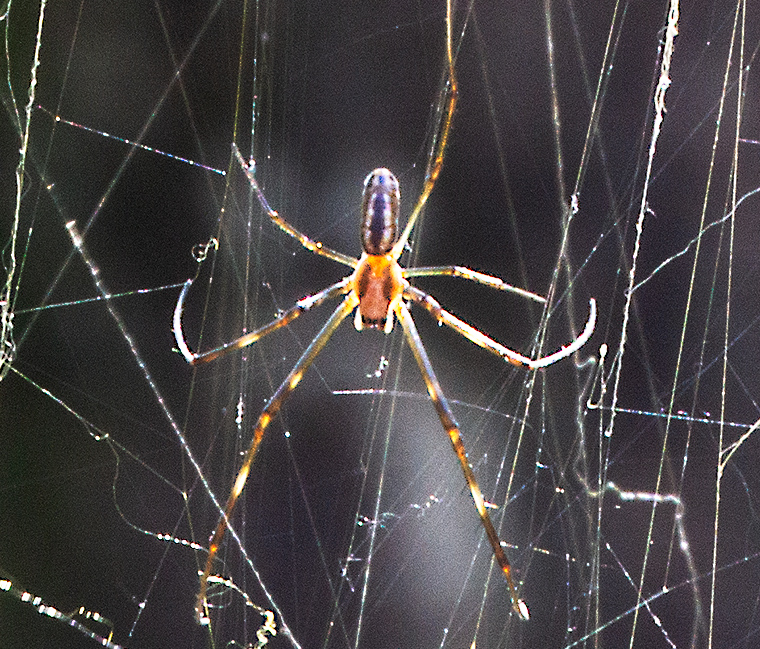
As you can see, full-grown males are much smaller than the females, and much more drably colored. In late summer and fall, it is not unusual to see several males hanging around in the web produced by the female. They are apparently waiting their chance for a quick rendezvous with the female. This is a hazardous maneuver, because males are often captured and eaten by the females.
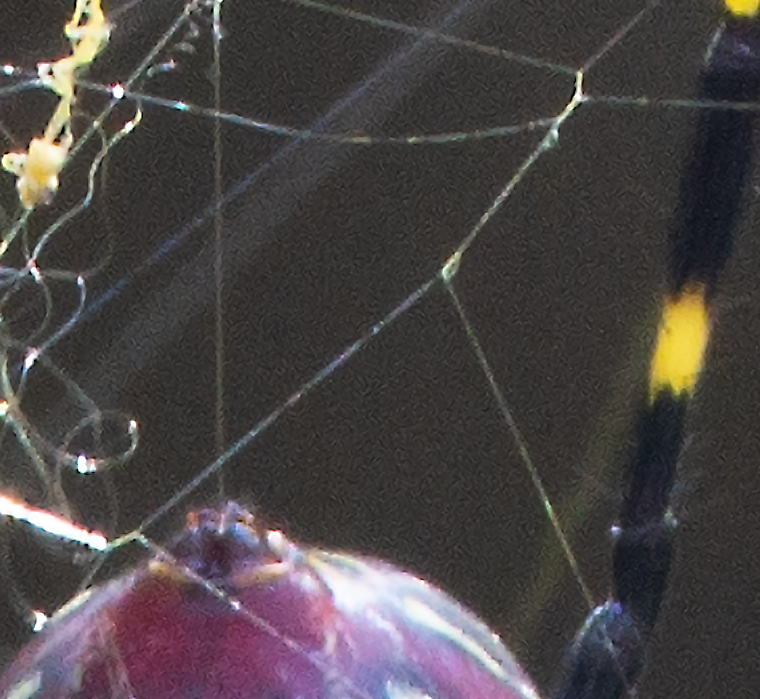
In the photograph above a strand of silk can be seen emerging from one of the spinners at the tip of the spider’s abdomen. Trichoephila cravata is a member of the group of spiders known as Golden Orb Weavers. Their silk is a beautiful golden color when viewed in the right light. It is also very strange, much stronger than the usual spider silk. Indeed, it is possible to weave this spider’s silk into clothing which has a beautiful golden sheen.
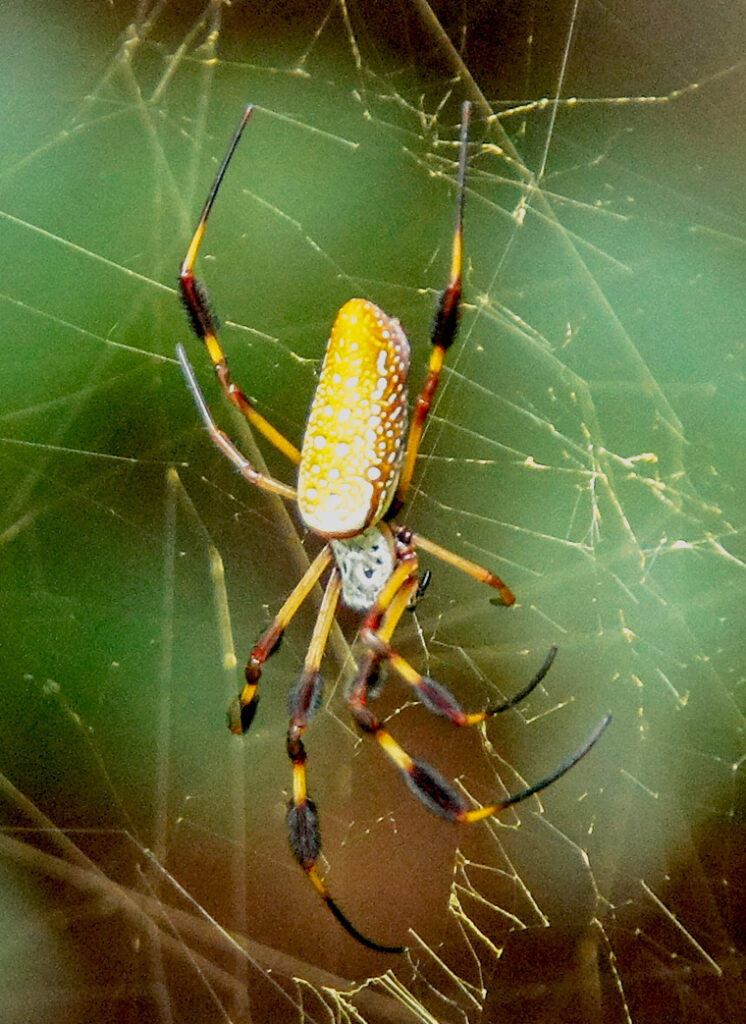
Our alien spider has a close relative which is native to the extreme southeast of the United States, including Florida and small parts of adjacent states. The relative is Tirconepilia clavipes, called the Banana Spider. I photographed this one in Florida a few years ago. It was more than three inches in size, including the legs. It had made a web fully six feet across. The furry looking bands around its legs are characteristic. The next time you go to Florida look around for one of these fascinating creatures.
